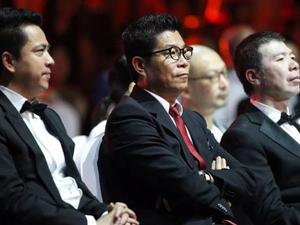Log in to Sina Finance APP to search [Xinpi] to view more evaluation grades
Stock speculation depends Jin Qilin analyst research report , authoritative, professional, timely and comprehensive, to help you tap potential theme opportunities!
Transfer from: Securities Times
The new regulations were officially implemented.
Less than two weeks before the end of the consultation, the Shenzhen and Shanghai Stock Exchanges issued 9 rules including the Review Rules for Stock Issuance and Listing on April 30, marking a new stage in the development of the capital market.
The official document has not changed much from the draft for comment, but compared with the previous rules, this revision is of benchmarking significance. It mainly implements the requirements of "long teeth with thorns" and angularity, highlights "strengthening the foundation" and "strict supervision and management", implements the requirements and improves the rules on the basis of maintaining the overall stability of the basic system in all business links, Further enhance the adaptability, effectiveness and predictability of institutional mechanisms.
The Chinese reporter of the securities firm will interpret the following hot topics, such as listing threshold, delisting requirements, dividend provisions, mergers and acquisitions.
The threshold for listing in multiple sectors is changing
The adjustment of IPO listing conditions has attracted market attention recently. According to the Review Rules for Stock Issuance and Listing issued by the Shenzhen and Shanghai Stock Exchanges on April 30, this revision is mainly to further improve the requirements for the financial indicators of the main board and GEM.
Specifically, the three sets of listing standards of Shenzhen and Shanghai main boards have improved the net profit, net cash flow, operating income, market value and other indicators:
1、 The cumulative net profit index of the first set of listing standards in the last three years has increased from 150 million yuan to 200 million yuan, the net profit index of the last year has increased from 60 million yuan to 100 million yuan, the net cash flow index of cumulative operating activities in the last three years has increased from 100 million yuan to 200 million yuan, and the cumulative operating revenue index of the last three years has increased from 1 billion yuan to 1.5 billion yuan.
2、 The cash flow index of the second set of listing standards has increased from 150 million yuan to 250 million yuan, further highlighting the blue chip positioning of the main board market, and improving the ability of listed companies to steadily return to investors.
3、 Moderately increase the estimated market value, income and other indicators of the third set of listing standards of the main board, increase the estimated market value of the third set of indicators from 8 billion yuan to 10 billion yuan, and increase the operating income of the latest year from 800 million yuan to 1 billion yuan, strengthen industry representation, and provide the market with more high-quality and diversified investment targets.
According to the insiders, the above adjustments can further highlight the stability of the performance scale of the blue chips in the main board market, and further enhance the practical ability of enterprises to stably return to investors through cash dividends and other ways after listing.
In terms of GEM, Shenzhen Stock Exchange mainly revised two sets of listing standards:
The net profit index of the first set of listing standards has increased the net profit index of the last two years from 50 million yuan to 100 million yuan, and added the requirement that the net profit of the last year should not be less than 60 million yuan, highlighting the company's ability to resist risks.
Moderately increase the estimated market value, income and other indicators of the second set of GEM listing standards, increase the estimated market value from 1 billion yuan to 1.5 billion yuan, and increase the operating income from 100 million yuan to 400 million yuan in the latest year, and support the listing of enterprises that meet the requirements of GEM positioning in terms of scale, industry and development stage.
Some scholars have analyzed that the newly revised GEM listing financial standards will help ease the queuing phenomenon of listing and smooth the financing channels of enterprises. "From the perspective of system design, the first set of standards is more suitable for most growth oriented innovative and entrepreneurial enterprises with stable profitability; the second set of standards is more suitable for a few enterprises with relatively small profit scale but very good quality; and the third set of standards is more suitable for enterprises with great development potential and strategic value."
According to the new and old division arrangement proposed by the Exchange, the above revision of the listing threshold shall come into force as of the date of the issuance of the new rules. The new regulations shall apply to the companies to be listed that have not passed the deliberation of the Listing Review Committee of the Exchange; The old rules shall apply to companies to be listed that have passed the review of the Listing Review Committee.
In terms of enterprises on the Science and Technology Innovation Board and the Beijing Stock Exchange, the financial conditions for IPO remained unchanged. However, in order to better support and encourage "hard technology" enterprises to be listed on the Science and Technology Innovation Board, strengthen the requirements of science and technology innovation attributes, and further highlight the "hard technology" characteristics of the Science and Technology Innovation Board, the CSRC issued the Guidelines on Evaluation of Science and Technology Innovation Attributes (for Trial Implementation) on April 30, and made adjustments.
Specifically, the "R&D investment amount in the last three years" was adjusted from "more than 60 million yuan accumulatively" to "more than 80 million yuan accumulatively", the "more than 5 invention patents applied to the company's main business" was adjusted to "more than 7 invention patents applied to the company's main business and capable of industrialization", and the "compound growth rate of operating income in the last three years" was changed from "20%" Adjust to "up to 25%". In the exception clause, "there are more than 50 invention patents (including national defense patents) that form core technologies and are applied to main businesses", and the requirement that invention patents "can be industrialized" is added simultaneously.
Accurately identify "empty shell zombies" and "black sheep"
The revision of delisting rules is also one of the hot topics concerned by the market. On April 12 this year, the new "National Ninth Article" proposed to "strengthen delisting supervision".
According to the Review Rules for Stock Issuance and Listing issued by Shenzhen and Shanghai Stock Exchanges on April 30, the delisting revision has three main points:
First, expand the scope of application of major illegal compulsory delisting. Reduce the number of years, amount and proportion of financial fraud delisting, and increase the number of consecutive years of fraud delisting. Revise the existing fraud delisting indicator that "the total amount of false records in two consecutive years has reached more than 500 million yuan, and more than 50% of the total amount disclosed in the two consecutive years", and distinguish three levels of one year, two consecutive years, three consecutive years and more: one year is the amount of false records "200 million yuan, accounting for 30%"; "300 million yuan in total and accounting for 20%" for two consecutive years; Delisting after being identified as false records for three consecutive years or more, and resolutely cracking down on vicious and long-term systematic financial fraud. The standards for one year and two consecutive years are applicable to false records in 2024 and later years; The standard for three consecutive years or more is applicable to false records in 2020 and later years.
In addition, in order to strengthen the supervision and restriction on financial fraud companies, strengthen the disclosure of financial fraud companies' risks, urge them to actively rectify, a new ST case was added. For fraud that did not touch the delisting standard, the administrative penalty notice in advance showed that the company's financial accounting report had false records, that is, ST was implemented. If the company has completed the retroactive adjustment of the punishment and the administrative punishment decision has been made for 12 months, it can apply for decapitation.
Second, three new regulatory delisting situations were added:
First, the new controlling shareholders occupy large amounts of funds without rectification and delisting, that is, "the company's controlled shareholders (if there is no controlling shareholder, it is the largest shareholder) Or the balance of non operating funds occupied by the related person of the controlling shareholder reaches more than 200 million yuan or accounts for more than 30% of the absolute value of the company's latest audited net assets, and is ordered by the CSRC to correct but fails to complete the rectification within the required time limit, "to effectively strengthen the supervision of major shareholders' embezzlement, urge the company to strengthen internal control, and maintain the financial independence of assets.
Second, the company added non-standard opinions on internal control for many years to delist, implemented * ST for non-standard internal control for two consecutive years or failed to disclose internal control audit reports as required, delisted in the third year after non-standard internal control or failed to disclose internal control audit reports as required, compacted the responsibilities of audit institutions, and urged the company to improve its internal governance and standardize its operation.
Third, disorderly competition for new control rights was added for delisting, and a category of "major defects in information disclosure or standardized operation" was added, that is, "disorderly competition for control rights occurred in the company, leading to investors being unable to obtain effective information of the company", urging shareholders to resolve control disputes within the institutional framework, and effectively guaranteeing the right to know of small and medium-sized investors.
Third, tighten financial delisting indicators. Improve the delisting index of operating revenue of loss making companies, increase the operating revenue of "negative net profit+operating revenue" from the current "100 million yuan" to "300 million yuan", and intensify efforts to eliminate companies that lack the ability to continue operating. The "total profit" is included in the consideration of "loss". The modified portfolio index is the lower of total profit, net profit and net profit, and the operating revenue is less than 300 million yuan. In addition, for financial * ST companies, the introduction of audit opinions on internal control of financial reports was delisted, and the normative requirements for star picking were improved.
The delisting rules of GEM are basically the same as the above, and the financial delisting indicators are slightly different, specifically: "total profit" is included in the consideration of "loss", and the modified portfolio indicator is the lower of total profit, net profit, and net profit deduction, and the operating revenue is less than 100 million yuan.
The Exchange said that from the perspective of overall impact assessment, the delisting rules are targeted precisely, targeting "shell zombies" and "black sheep", severely cracking down on companies that have counterfeited for years in a row and have controlling shareholders' funds occupied and not rectified, highlighting the quality and investment value of listed companies, not targeting "small cap" companies. At the same time, the implementation of the rules has set up a break arrangement to ensure a smooth transition between the old and new rules and standards, clarify investors' expectations, and strengthen risk disclosure.
The Exchange also mentioned that the above amendments will continue to promote the strengthening of accountability and the protection of investors' interests. On the one hand, delisted companies with violations of laws and regulations will be firmly disciplined, and the responsible persons will be severely punished by making full use of the "public identification" measures. We will continue to strengthen the multi-dimensional accountability of administrative punishment, criminal accountability, civil compensation and other aspects with the regulatory authorities and judicial organs, and effectively increase the punishment of relevant subjects for violations of laws. On the other hand, strengthen the risk disclosure of delisting risk companies and clarify investors' expectations. If there are false records and other acts infringing the interests of investors, we will promote the comprehensive use of representative litigation, advance compensation and other methods to safeguard the legitimate rights and interests of investors.
Being ST only because the dividend is not up to the standard will not lead to delisting
In order to enhance investors' sense of gain, the Exchange took many measures to strengthen the supervision of cash dividends. According to the Review Rules for Stock Issuance and Listing issued by Shenzhen and Shanghai Stock Exchanges on April 30, there are mainly two aspects in the revision of dividend regulation.
First, ST situation of new cash dividends. Add the ST case that "the net profit of the latest accounting year is positive, and the undistributed profit at the end of the consolidated statement and the parent company's statement year is positive, the cumulative cash dividend amount of the latest three accounting years is less than 30% of the average annual net profit of the latest three accounting years, and the cumulative cash dividend amount of the latest three accounting years is less than 50 million yuan", Urge companies with dividend capacity to improve dividend levels.
The financial indicators of GEM are different, Specifically: Add "For companies with positive net profit in the latest accounting year and positive undistributed profit at the end of consolidated statements and parent company statements, the accumulated cash dividends in the last three accounting years are less than 30% of the average annual net profit in the last three accounting years, and the accumulated cash dividends in the last three accounting years are less than 30 million yuan, but the accumulated R&D investment in the last three accounting years Except for the "ST" situation, the proportion of cumulative operating income exceeds 15% or the cumulative R&D investment in the last three fiscal years exceeds 300 million yuan.
The Exchange said that the above revisions focus on companies that are profitable and have surplus but do not pay dividends or have a low proportion of dividends for a long time. The applicable premise is that the net profit of the company in the latest accounting year is positive and the undistributed profits of the parent company and the consolidated statement at the end of the year are positive. The main purpose is to urge listed companies to return to investors with stronger constraints.
The Exchange particularly emphasized that the implementation of "other risk warning" is not "delisting risk warning" (* ST), and the company's being ST only because the dividend is not up to standard will not lead to delisting.
Second, encourage listed companies to pay dividends in the medium term and clarify the profit distribution benchmark. It is clarified that the profit distribution of a listed company shall be based on the distributable profits in the latest audited parent company statement, and the current profits shall be reasonably considered. The Company is required to determine the frequency of cash dividends by comprehensively considering the undistributed profits, current performance and other factors, and increase the frequency of dividends if conditions are met, so as to stabilize the dividend expectation of investors.
It is understood that the relevant regulations will be officially implemented from January 1, 2025, of which "the last three fiscal years" refer to the years 2022 to 2024, during the transition period, listed companies affected by the rules can increase the cash dividend level or buy back shares and cancel them, so as to improve the return ability of investors.
Fine supervision on major asset restructuring of "shell companies"
M&A is an important way to optimize resource allocation in the capital market and a powerful tool to support listed companies to become better and stronger. The new "National Ninth Article" emphasizes that we should strengthen the reform of M&A and take multiple measures to activate the M&A market.
The Exchange said that in order to avoid the "empty shell zombies" and "black sheep" that should have been cleared, the new "National Ninth Article" clearly requires strengthening the supervision of mergers and acquisitions, and further reducing the value of "shell" resources, in order to cooperate with major shareholders to cash out, avoid delisting, disrupt the market order, and damage the interests of small and medium-sized investors through "fooling" restructuring, "three high" mergers and acquisitions, and blind cross-border acquisitions, The CSRC's Opinions on Strictly Implementing the Delisting System requires strict supervision of mergers and acquisitions of listed companies on the risk warning board.
The Stock Listing Rules issued by the Exchange on April 30 revised the listing conditions, improved the listing conditions for restructuring, strictly controlled the quality of injected assets, and prevented inefficient assets from being injected into listed companies. It is reported that the threshold for restructuring and listing will align with the requirements of financial indicators for IPO listing.
Next, the Exchange will carry out fine supervision on the major asset restructuring of "shell" companies, strictly supervise the companies whose income and profit indicators have been "delisting risk warning" (* ST) due to lack of sustainable operation ability, and companies that are close to trading delisting indicators to plan major asset restructuring, and strictly prevent "shell protection" and "shell speculation" in violation of regulations; Improve the coverage of on-site inspection for major asset restructuring of other * ST, ST and other companies, and effectively control the quality of target assets.
In addition, the Exchange also improved the "small quick" audit mechanism. Specifically, Shenzhen and Shanghai Stock Exchanges respectively adjusted the GEM and Science and Technology Innovation Board, that is, expanded the scope of small quick application of GEM/Science and Technology Innovation Board, and removed the restriction that GEM/Science and Technology Innovation Board supporting financing should not be used to pay transaction consideration; According to the idea of matching the financing demand with the size of the company, the supporting financing of GEM/Sci Tech Innovation Board was changed from "not more than 50 million yuan" to "not more than 10% of the audited net assets of listed companies in the latest year". If it is specified that "there are significant and complicated circumstances such as no precedent and significant public opinion in the transaction scheme", the small amount rapid review procedure is not applicable. In addition, the time limit for the review of small fast exchanges was reduced to 20 working days to clarify market expectations.
At the same time, the Exchange encourages listed companies to absorb and merge, and defines the management requirements for the appropriateness of investors who obtain shares in restructuring transactions. That is, a listed company is merged by means of share exchange. If the shareholders of the merged company do not meet the requirements for the appropriateness management of investors in the sector where the merged company is located, they may hold or sell the shares of the merged company acquired in accordance with regulations.
When the stock market recovers, open an account first! Intelligent fixed investment, condition sheet, individual stock radar... for you>>

Massive information, accurate interpretation, all in Sina Finance APP










